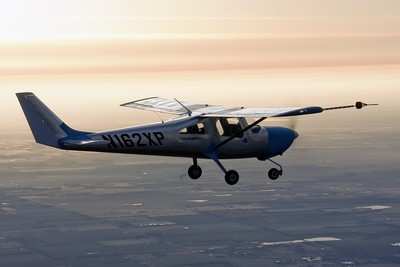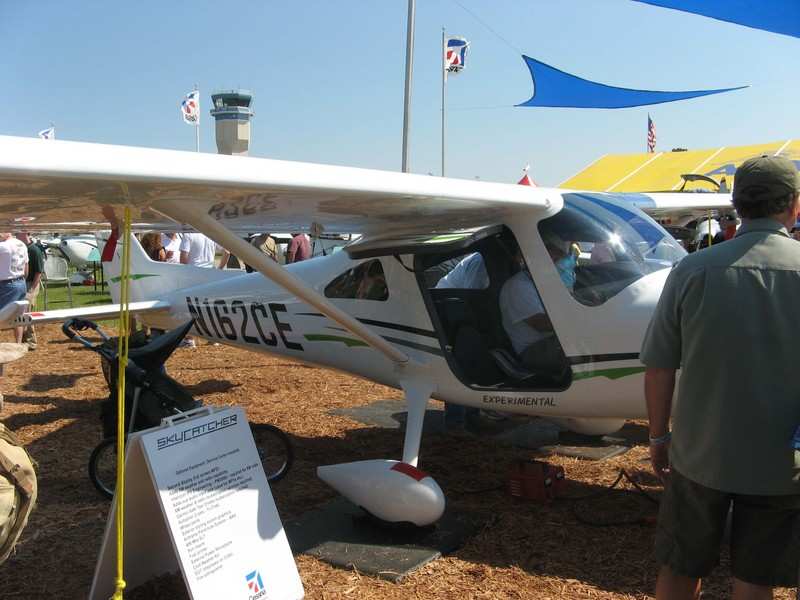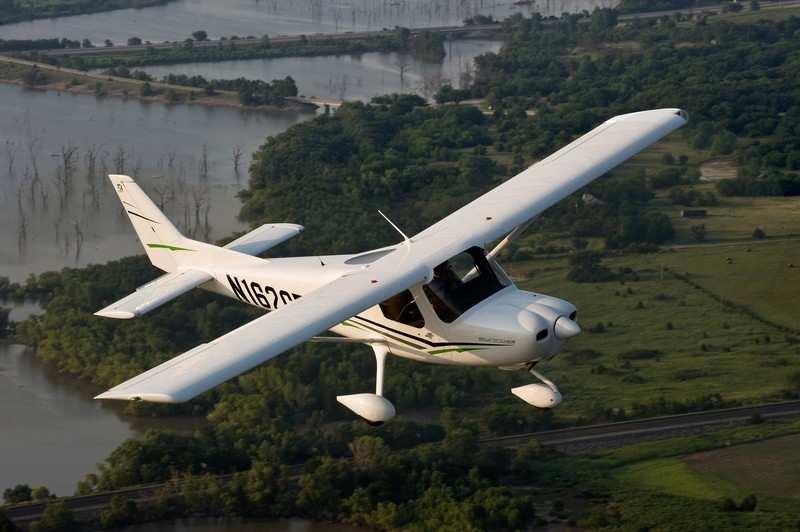Airframe Chute's Failure Forces Real-Live Bail-Out...
ANN has learned some surprising details surrounding the recent
loss of a non-conforming flying prototype of the Cessna SkyCatcher
LSA during exclusive conversations with personnel from Cessna
Aircraft and BRS Parachutes.

Cessna's prototype Model 162 SkyCatcher light sport aircraft
(specifically shown above and below) crashed Thursday afternoon
near Douglass, KS on what was described as a routine test flight,
but a Cessna spokesperson now describes as an extensive evaluation
of the aircraft's spin matrix... this particular test being devoted
to "Full-Power, cross-controlled spins."

The prototype aircraft, N162XP, was one of three flight test
vehicles that Cessna has been evaluating, though this aircraft was
not a fully conforming airframe. The accident plane had over 150
flight hours. This airframe first flew in March of this year. The
company showed the production-spec SkyCatcher at Oshkosh in July.
The spokesperson said the aircraft's structure survived the impact
largely intact, with the wing and empennage still attached to the
fuselage, and that the emergency centered on issues of aircraft
control and not structures.
The test pilot bailed out of the aircraft at a fairly high
altitude and survived the incident with minor injuries.
Cessna has been pretty open and up-front with the matter, at
least to the extent of what is known just a few days after the
incident. So far, Cessna and BRS have both confirmed that the pilot
entered into some mode of irrecoverable flight condition in the
spin tests and attempted to fire the rocket-deployed BRS emergency
airframe parachute system. This corresponds to the "pops" and
"sparks" reported by some witnesses. However; the BRS "failed to
deploy as intended," according to a BRS staffer, and the pilot was
left with no other choice but to egress the aircraft. No reason has
been given for the alleged failure of the BRS parachute system but
BRS confirms that they have personnel on sight to participate in
the investigation.

The pilot safely extricated himself and successfully deployed a
Free Flight Preserve 1 canopy (thought to be part of a
Para-Phernalia parachute system... the leading user of that canopy
design), and landing about a quarter-mile from where the SkyCatcher
impacted. While the airframe hit the ground largely intact, Cessna
confirms that the aircraft is "totaled."

Cessna has undertaken an aggressive flight test program with the
SkyCatcher and their spokesperson confirms that the test program
"meets or exceeds" the specs laid out by ASTM for LSA
Certification. The first conforming test vehicle (P1) will take the
place of this aircraft in the test program and resume the
examinations fairly soon.

It's still too soon to say whether Thursday's crash will affect
Cessna's planned production schedule for the 162, which currently
calls for the plane to enter production in 2009, but Cessna staff
remain optimistic that the remaining test program can be conducted
and the aircraft certified so that the SkyCatcher can be offered on
a schedule close to that originally scheduled.
ANN will continue to update this story as more information
becomes available.
 ANN's Daily Aero-Term (04.20.24): Light Gun
ANN's Daily Aero-Term (04.20.24): Light Gun Aero-News: Quote of the Day (04.20.24)
Aero-News: Quote of the Day (04.20.24) ANN's Daily Aero-Linx (04.21.24)
ANN's Daily Aero-Linx (04.21.24) Aero-News: Quote of the Day (04.21.24)
Aero-News: Quote of the Day (04.21.24) ANN's Daily Aero-Term (04.21.24): Aircraft Conflict
ANN's Daily Aero-Term (04.21.24): Aircraft Conflict







